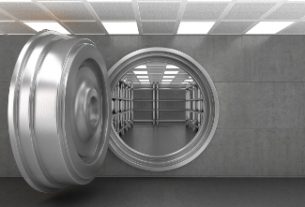It’s no secret that the retirement outlook for most Americans is dire. While figures for the average amount of retirement savings get bandied about here and there in the media, the median amount of retirement savings in the US is zero. That’s right, more than half of Americans have no retirement savings whatsoever. Whether they’re planning on Social Security and government assistance bailing them out, relying on friends and family, or expecting never to be able to retire, it seems that the American dream of a long and comfortable retirement will be a pipe dream for many.
Social Security in Dire Shape
Many older Americans already rely on Social Security for the majority of their income. But the Social Security System is facing its own problems. Within fifteen years, the system’s trust fund is expected to be fully depleted, with payroll taxes only bringing in enough money to fund 80% of expected Social Security outlays. And if we enter a financial crisis anytime soon, the financial position of the trust fund could deteriorate even quicker than that.
Social Security was intended to be a backstop, not a primary source of retirement income. Too many Americans have come to rely on it for retirement income, but Congress seems to be oblivious to the problems with the system. Without some fixes and changes in the near future, millions of retirees could see their plans for retirement completely upended.
More Older Americans Working
In the golden days of retirement, many workers sought to exit the workforce at 55, assuming they had built up enough of a nest egg. And full retirement benefits generally kicked in at 65, by which most workers had left the workforce. But an increasing number of older Americans are working past 65, and even into their 70s.
In fact, over a quarter of Americans between the ages of 65 and 74 are still working. And over the next decade or so, that will increase to over a third of that age cohort. While many older workers continue working because they enjoy their work, or reenter the workforce after retirement because they’re bored, many more keep working because they can’t afford not to.
That of course means fewer jobs and slower advancement for younger Americans, denying them the ability to build their careers and save money to buy a house, start a family, and eventually retire. The more older Americans work, and the longer they remain in the workforce, the stronger that effect will get.
Americans Not Saving Enough
The reason many Americans can’t afford to retire is because they haven’t saved enough. The median retirement account balance is zero, and the median balance among those with retirement accounts is $60,000. That’s a drop in the bucket when medical costs for a couple are expected to top $200,000 in retirement.
All in all there is a $4.3 trillion gap between what American households have saved for retirement and what they should have saved for retirement. That’s a tremendous hole, and there’s almost no likelihood of it being filled anytime soon.
How You Can Save Your Retirement
If you’re one of those people who hasn’t saved enough for retirement, it isn’t too late. You can take steps to improve your financial position and help ensure that you’ll be in sound financial position come retirement.
1. Cut Expenses
The first thing you’ll have to do is cut out any extraneous expenses. Differentiate between needs and wants, so that your needs are paid for and your wants are only met when money allows. In order to figure out which expenses are necessary and which aren’t, you’ll need to establish a budget and track your spending.
Try tracking every purchase you make for a month or two, and you’ll probably be surprised at just how much money you spend. And it’s almost guaranteed that you’ll be able to find areas to cut back your spending. A little here and a little there, and pretty soon you’ll see that saving money is well within your reach.
2. Increase Savings
Once you’re able to cut back on spending, then you can start increasing your savings. Build up a rainy day fund or emergency fund, pay down debts, and get yourself on sound financial footing. Once you’re able to get out of debt and establish your finances, then you can start thinking about how to put your increased savings to work for you.
3. Invest Wisely
The final step is the most important step: making the right investments. That’s where many households give up. They think it’s too complicated to invest, that it takes too much time to do research or requires too much knowledge of financial markets. Or they’re so afraid of losing money that they just stick their money in the bank, where it is guaranteed to lose money to inflation.
But with the right mix of investments, and paying attention to what is happening in financial markets, anyone can build up a nest egg and minimize losses. Creating a properly diversified portfolio, with investments in stocks, bonds, gold and precious metals, real estate, etc. is well within the reach of anyone.
If you’re just starting to think about shoring up your retirement savings, it’s not too late. You’ll want to be attuned to the way markets are working right now, particularly as a stock market crash seems imminent. Keeping your powder dry for a bit, or investing in hedges like gold and silver, aren’t bad ideas if you’re worried about falling stock markets. But the sooner you get your money working for you and building up your nest egg, the better off you’ll be in retirement.
This article was originally posted on Goldco.





